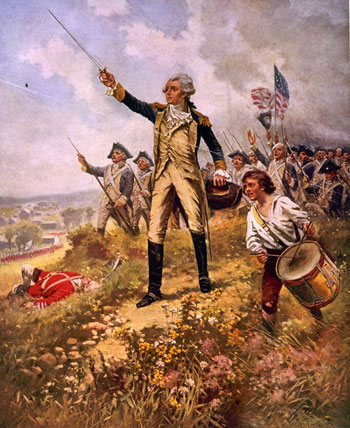July 2025 |
||||||
|---|---|---|---|---|---|---|
| Mon | Tue | Wed | Thu | Fri | Sat | Sun |
|
1
|
2
|
3
|
4
|
5
|
6
|
|
|
7
|
8
|
9
|
10
|
11
|
12
|
13
|
|
14
|
16
|
17
|
18
|
19
|
20
|
|
|
21
|
22
|
23
|
24
|
25
|
26
|
27
|
|
28
|
29
|
30
|
31
|
|||
1 – THE HERMIONE
The Hermione was a 12-pounder Concorde class frigate of the French Navy. She became famous when she ferried General Lafayette to the United States in 1780 for extension and spread of the war in the American Independence Movements 1754–1763 on behalf of the French interest.
Hermione was built in eleven months at Rochefort, by the shipwright Henri Chevillard as a light frigate, fast and maneuverable.
Between May and December 1779 she underwent successful sea trials in the Gulf of Gascony under the command of Lieutenant de Latouche.
General La Fayette embarked at Rochefort on 11 March 1780 and arrived in Boston on 28 April carrying the secret news that he had secured French reinforcements (5,500 men and 5 frigates) for Washington.
Hermione fought several times in company with the Astrée, commanded by Lapérouse, especially at the Naval battle of Louisbourg on 21 July 1781.
After the end of the American Revolutionary War, Hermione returned to France in February 1782. She then formed part of a squadron sent to India to help Suffren against the British. However peace was declared and the ship returned to Rochefort in April 1784.
Again in service against the British, on 20 September 1793,[3] she ran aground off Le Croisic, and was then wrecked by heavy seas. The court-martial consecutive to the wreck found her pilot, Guillaume Guillemin du Conquet, responsible for her loss; her commanding officer, Captain Martin, was honorably acquitted.
In 1997 a reconstruction project started in Rochefort.
Hermione frigate started a return voyage to the United States from Rochefort, France and his now in the United States.
2 – Marquis DE LE FAYETTE
Frenchman Marquis de Lafayette fought in the American Revolutionary War and helped shape France’s political structure before and after the French Revolution.
The Marquis de Lafayette was born on September 6, 1757, in Chavaniac, Auvergne – France. He served the Continental Army with distinction during the American Revolutionary War, providing tactical leadership while securing vital resources from France. Lafayette fled his home country during the French Revolution, but the “Hero of Two Worlds” regained prominence as a statesman before his death on May 20, 1834.
Early Years
Marie Joseph Paul Yves Roche Gilbert du Motier, Marquis de Lafayette, was born into a family of noble military lineage on September 6, 1757, in Chavaniac, France.
Lafayette’s father was killed in battle during the Seven Years War, and his mother and grandmother both died in 1770, leaving Lafayette with a vast inheritance. He joined the Royal Army the following year, and in 1773 married 14-year-old Marie Adrienne Françoise de Noailles, a member of another prominent French family.
Colonial Ally
Inspired by stories of the colonists’ struggles against British oppression, Lafayette sailed to the newly declared United States in 1777 to join the uprising. He was initially rebuffed by colonial leaders, but he impressed them with his passion and willingness to serve for free, and was named a major-general in the Continental Army. His first major combat duty came during the September 1777 Battle of Brandywine, when he was shot in the leg while helping to organize a retreat. General George Washington requested doctors to take special care of Lafayette, igniting a strong bond between the two that lasted until Washington’s death.
Following a winter in Valley Forge with Washington, Lafayette burnished his credentials as an intelligent leader while helping to draw more French resources to the colonial side. In May 1778, he outwitted the British sent to capture him at Bunker Hill, later renamed Lafayette Hill, and rallied a shaky Continental attack at Monmouth Courthouse to force a stalemate.
After traveling to France to press Louis XVI for more aid, Lafayette assumed increased military responsibility upon his return to battle. As commander of the Virginia Continental forces in 1781, he helped keep British Lieutenant General Lord Cornwallis’ army pinned at Yorktown, Virginia, while divisions led by Washington and France’s Comte de Rochambeau surrounded the British and forced a surrender in the last major battle of the Revolutionary War.
Post American Revolution
Known as the “Hero of Two Worlds” after returning to his home country in December 1781, Lafayette rejoined the French army and organized trade agreements with Thomas Jefferson, the American ambassador to France.
With the country on the verge of major political and social upheaval, Lafayette advocated for a governing body representing the three social classes, and drafted the Declaration of the Rights of Man and of the Citizen. Named commander of the Paris National Guard as violence broke out in 1789, Lafayette was obligated to protect the royal family, a position that left him vulnerable to the factions vying for power. He fled the country in 1792, but was captured by Austrian forces and didn’t return to France until 1799.
Lafayette maintained a low profile while Napoleon Bonaparte took power as emperor of France, but he was elected to the Chamber of Deputies during the Hundred Days and vehemently argued for Napoleon’s abdication following the defeat at the Battle of Waterloo in July 1815.
After Charles X was overthrown during the July Revolution in 1830, Lafayette was presented with the opportunity to become dictator. The aging statesman demurred to let rule pass to Louis-Philippe, and instead was reestablished as commander of the National Guard.
Following a battle with pneumonia, he died on May 20, 1834.





